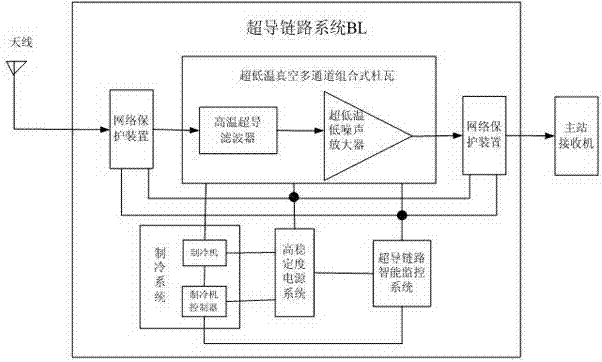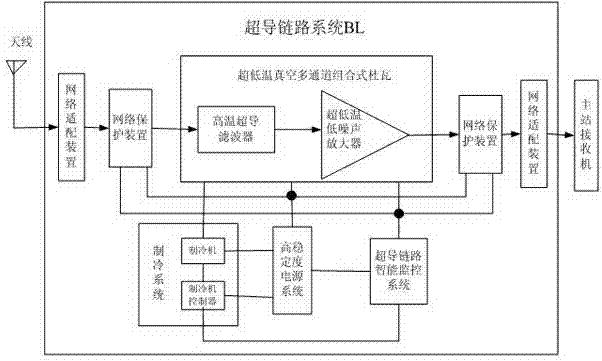Superconducting link system
A link system and superconducting technology, applied in electrical components, wireless communication, etc., can solve problems such as polluting the network environment, pollution, and deterioration of signal-to-noise ratio, achieve strong anti-interference ability, overcome device blockade, and reduce background noise Effect
- Summary
- Abstract
- Description
- Claims
- Application Information
AI Technical Summary
Problems solved by technology
Method used
Image
Examples
Embodiment Construction
[0031] In order to make the object, technical solution and advantages of the present invention clearer, the present invention will be further described in detail below in conjunction with the accompanying drawings.
[0032] The superconducting link system of the present invention has two kinds of single-channel structures, i.e. single-channel structure 1 and single-channel structure 2, and the superconducting link system will be selected according to the interface form with the network master station receiver and the required number of channels Structural and combined channels.
[0033] Such as figure 1 Shown is the single-channel structure 1 of the superconducting link system of the embodiment of the invention, including a network protection device, an ultra-low temperature vacuum multi-channel combined Dewar, a high-temperature superconducting filter, an ultra-low-temperature low-noise amplifier, a refrigeration system, and a high-stability power supply system, superconductin...
PUM
 Login to View More
Login to View More Abstract
Description
Claims
Application Information
 Login to View More
Login to View More - R&D
- Intellectual Property
- Life Sciences
- Materials
- Tech Scout
- Unparalleled Data Quality
- Higher Quality Content
- 60% Fewer Hallucinations
Browse by: Latest US Patents, China's latest patents, Technical Efficacy Thesaurus, Application Domain, Technology Topic, Popular Technical Reports.
© 2025 PatSnap. All rights reserved.Legal|Privacy policy|Modern Slavery Act Transparency Statement|Sitemap|About US| Contact US: help@patsnap.com



